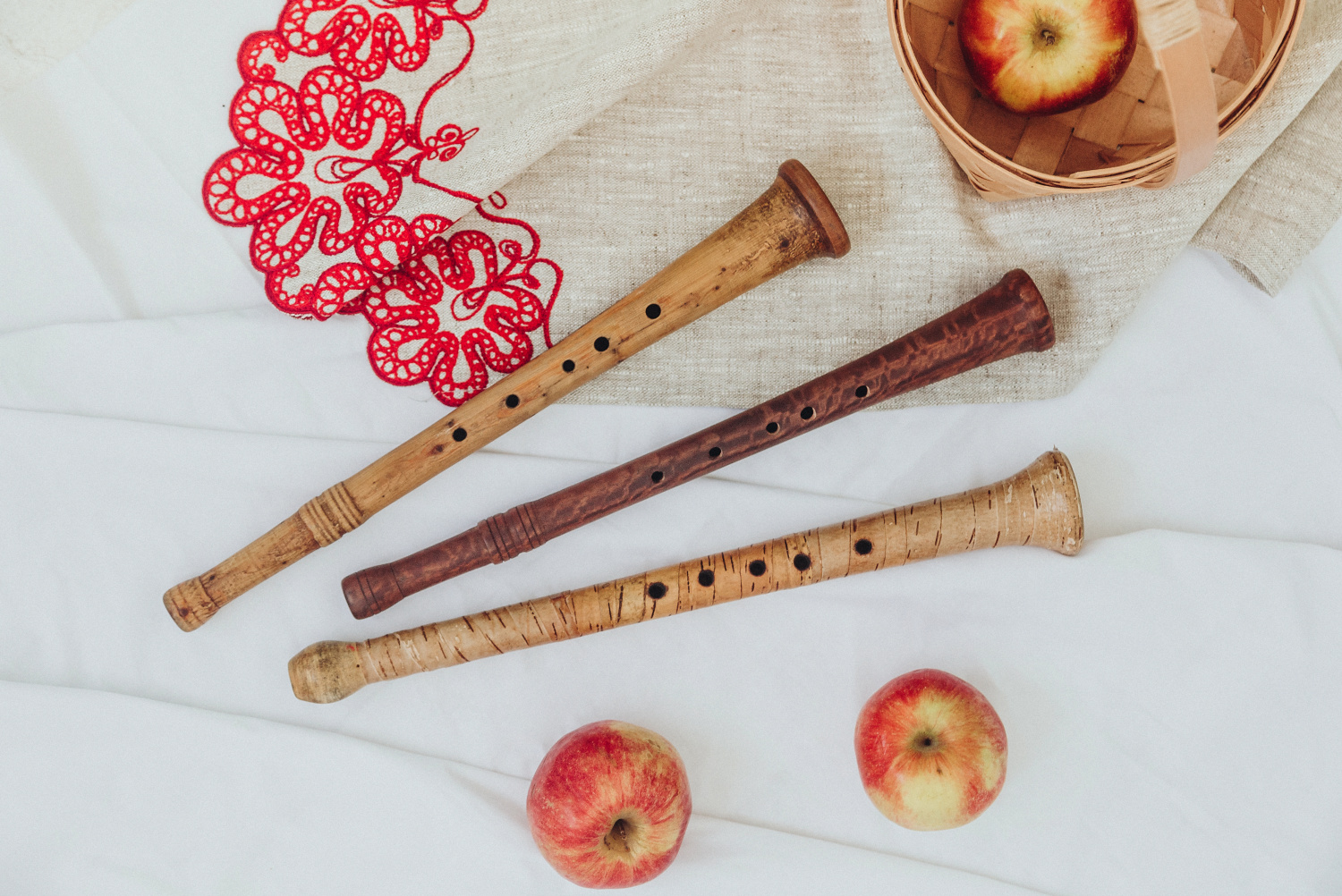Horn and horn musical culture

The horn and the art of horn players are an organic part of the musical culture of the Russian people. The techniques of shepherd's tunes performed on horns were used in their works by Russian composers — A.P. Borodin, M.I. Glinka, P.I. Tchaikovsky, N.A. Rimsky-Korsakov, S.I. Taneyev and others. The beauty and soulfulness of horn music inspired writers and poets — from A.S. Pushkin, S.A. Yesenin, M.M. Prishvin to A.T. Tvardovsky, V.A. Soloukhin, S.K. Nikitin and others. In Russian music and literature, the horn has always been a symbol of Russian folk roots and native land.
In general, animal horns have been used since ancient times by different peoples in military campaigns, palace receptions, hunting, as well as in shepherding to extract powerful natural sounds that served as signals. The Russians, first of all, used horns of wild bulls in everyday life. Over time, these signaling instruments began to be made from cow, goat’s horns, and then were imitated from wood. In addition, shepherds didn’t need such loud horns as military. Gradually, the shepherd's signaling instruments — attributes of a purely peaceful life, gathering herds at dawn, — got the name, a diminutive of the word «horn» — «rozhok».
The territory of distribution of the horn musical tradition covers the present Vladimir, Ivanovo, Kostroma, Moscow, Nizhny Novgorod, Ryazan, Tver, Yaroslavl regions. Its center was located on the Vladimir land, where several centuries ago the art of folk music performed by horn-players ensembles was born and became popular. The shepherd's horn, which gradually turned from a signal to a musical instrument, has since been widely called «Vladimir rozhok» ( «Vladimir horn»).

Shepherding was one of the leading trades in the Vladimir province. From April to the end of October, adults and adolescents earned their living by this labor. During the rest, shepherds played simple melodies on horns, gradually improving their performing skills. Voice holes appeared on a horn, which were closed with fingers, when played. This made it possible to extract sounds of different heights.
Folk craftsmen made a horn not just as a shepherd's attribute, but as a completely independent musical instrument. They used birch (for bass), juniper (for high sound) blanks in the form of straight conical pipes, the length of which varied from 32 to 83 cm. Then the blanks were split longitudinally, the interior portion of wood was extracted with semicircular chisels, up to six playing finger holes (usually five at the top of the horn and one at the bottom) were drilled (or burned out), and two processed halves were braided with steamed birch-bark, holding them together. A small deepening at the beginning of the barrel served as a mouthpiece. The trumpet was made of tin or a natural cow horn and was given a conical shape. Each new instrument got the final processing already during use. Therefore, the old horns (which have already been played) were valued more than new ones.

Juniper horns have the best sound qualities, according to modern musicians. Traditional manufacturing technology has been passed down from generation to generation up to this day. But already from the end of the 19th and the beginning of the 20th centuries, in connection with the expansion of ensemble playing on horns, artisans used a lathe in the manufacture of instruments in large quantities. Today there are few real masters left. For example, in Vladimir there are only two famous masters — Alexander Zakharov and Vladimir Zaitsev.
There are two main types of horns – ensemble and solo. Ensemble horns are a small horn, popularly called «screecher», 32-36 cm long, and a large, so-called «bass», 60-83 cm long. They are always tuned relative to the other in an octave and have a minimum and maximum possible size. It is believed that the smaller the horn, the harder it is to play. A medium-sized horn (50-60 cm), popularly called a «half-bass», is usually used for solo play, as well as for accompaniment of mostly choral singing.

The timbre of the Vladimir horn is original, it synthesizes the timbres of a trumpet and a human voice. It’s no coincidence that some of their tunes horn players called songs. Ensembles of horn players, which gained great popularity in the second half of the 19th century, began to be called «choirs». The horn art developed under the direct influence of folk songs, and the sound of a horn-players ensemble resembled the polyphony of a song choir.